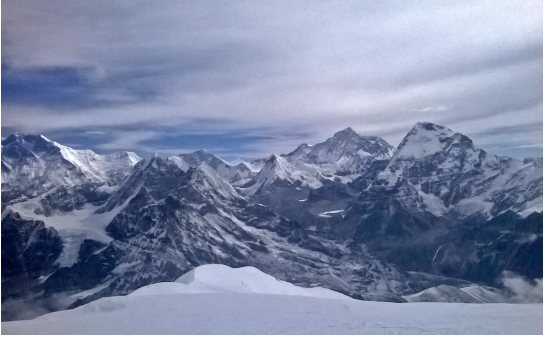The Kanchenjunga Base Camp Trek is a bucket-list adventure for trekking enthusiasts seeking solitude, pristine nature, and cultural immersion in the remote Himalayas. This trek, named after Mount Kanchenjunga, the third-highest peak in the world at 8,586 meters, offers a unique opportunity to explore one of the most isolated and breathtaking regions of Nepal. From verdant forests and alpine meadows to majestic glaciers and diverse ethnic cultures, this trek provides an unparalleled experience.
In this article, we’ll dive into everything you need to know about the Kanchenjunga Base Camp Trek, including key highlights, preparation tips, and FAQs.
Why Choose the Kanchenjunga Base Camp Trek?
1. Off-the-Beaten Path Adventure
Unlike popular treks like Everest Base Camp or Annapurna Circuit, the Kanchenjunga trek attracts fewer visitors, ensuring peace and tranquility. The remoteness of this trail allows trekkers to immerse themselves in untouched landscapes and authentic Himalayan culture.
2. Diverse Landscapes
The trek offers a diverse range of landscapes, from tropical forests filled with rhododendrons and orchids to high-altitude glaciers and rugged terrains. The trail passes through lush valleys, alpine pastures, and towering peaks, providing unmatched scenic beauty.
3. Cultural Richness
The Kanchenjunga region is home to a variety of ethnic groups, including Limbu, Rai, and Sherpa communities. Trekkers get to experience local traditions, taste regional delicacies, and observe unique festivals.
4. Stunning Peaks
The trek provides close-up views of several Himalayan giants, including Mount Kanchenjunga, Janu Peak, and the Kabru range. The dramatic vistas are a highlight for photographers and nature lovers alike.
Trekking Route and Itinerary
The trek to Kanchenjunga Base Camp can be approached from the north or south base camp, with many trekkers opting to combine both routes. Here’s a standard 21-day itinerary:
- Day 1-2: Arrival in Kathmandu and flight to Bhadrapur, followed by a drive to Taplejung.
- Day 3-6: Trek through villages like Mitlung, Chirwa, and Sekathum.
- Day 7-10: Enter Kanchenjunga Conservation Area and ascend to Ghunsa, experiencing dense forests and occasional wildlife sightings.
- Day 11-13: Trek to Kanchenjunga North Base Camp (Pangpema) for panoramic mountain views.
- Day 14-17: Cross Sele La Pass and descend to South Base Camp via Cheram.
- Day 18-21: Return to Taplejung and travel back to Kathmandu.
Essential Preparation and Tips
1. Permits
Trekkers need a Restricted Area Permit (RAP) and entry permits for the Kanchenjunga Conservation Area. These are typically arranged through trekking agencies.
2. Fitness and Training
This trek requires a high level of physical fitness. Prepare with cardio exercises, strength training, and practice hikes to build stamina.
3. Best Time to Trek
The best seasons are spring (March-May) and autumn (September-November) when the weather is clear, and the trails are accessible. Avoid monsoon months due to heavy rains and slippery paths.
4. Packing Essentials
Pack wisely with essentials such as a high-quality sleeping bag, layered clothing, trekking boots, rain gear, and first-aid supplies. Hiring a guide and porter is highly recommended for safety and convenience.
5. Altitude Sickness
Acclimatization is crucial as the trek reaches altitudes of over 5,000 meters. Drink plenty of water, ascend gradually, and be aware of symptoms like headaches or dizziness.
Conclusion
The Kanchenjunga Base Camp Trek is a dream journey for trekkers who crave an authentic Himalayan adventure away from crowded trails. With its breathtaking scenery, rich biodiversity, and cultural diversity, this trek promises an unforgettable experience. While challenging, the trek’s rewards far outweigh the effort, making it a once-in-a-lifetime opportunity for adventure seekers.
FAQs
1. How long does the Kanchenjunga Base Camp Trek take?
The trek typically takes about 21-24 days, depending on the chosen route and acclimatization days.
2. What is the difficulty level of this trek?
The trek is graded as strenuous due to its length, high altitude, and rugged terrain. Prior trekking experience is recommended.
3. Do I need a guide for this trek?
Yes, a guide is mandatory as the Kanchenjunga region is a restricted area. They also enhance safety and provide valuable cultural insights.
4. Is the trek suitable for beginners?
This trek is more suited for experienced trekkers due to its challenges. Beginners may consider shorter and less demanding treks before attempting Kanchenjunga.
5. What wildlife can I expect to see?
The Kanchenjunga Conservation Area is home to red pandas, snow leopards, Himalayan black bears, and various bird species.
Embark on the Kanchenjunga Base Camp Trek to discover the hidden gem of the Himalayas, where adventure meets serenity, and every step leads to awe-inspiring beauty.

